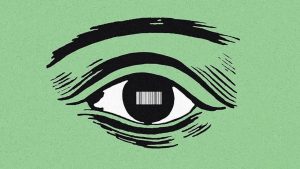In 2005, the American Dialect Society declared “truthiness” its word of the year – but not for its original, albeit archaic, usage of describing the habit of being truthful.
Earlier that year, comedian and satirist Stephen Colbert gave truthiness a very modern and ironic spin when trying to come up with the right word for a sketch. He explained the word to his writers: “We’re not talking about truth, we’re talking about something that seems like truth – the truth we want to exist.”
Truthiness abounds in social media. When everyone is empowered to share their every thought, the line between fact and opinion becomes ever more blurred. The weight of all those subjective experiences begins to outweigh the objective data. Echo chambers form that make it even harder for factual information to reach the people who most need to be persuaded or corrected by it.
“Just gimme the facts, ma’am”
The major social networks continue to debate what their role should be in policing misinformation and fake news, with differing strategies. Facebook’s third-party fact-checking program has been criticised for alleged political bias while Twitter has attracted the ire of President Trump by attaching warnings to some of his tweets.
However, Twitter’s more recent fact-checking approach may be a clue to how social media companies might address the constant flood of inaccuracy and mischief in the future – and how it might affect the rest of us who aren’t influential politicians.
In June, Twitter began automatically adding a warning label to any tweet that mentions both 5G and COVID-19 as a way to combat the spread of misinformation and conspiracy theories. The label simply says, “Get the facts about COVID-19” and links to a Twitter story with the title “No, 5G isn’t causing coronavirus.”
Myth busted? Probably not. There’ll always be those who refuse to accept the evidence, preferring to accept anecdotal evidence over hard facts. But providing easy access to the evidence might reduce the spread of misinformation among people who might otherwise have trusted the claim uncritically.
The company is still manually removing tweets that contain “a call to action that could potentially cause harm.” Automatically labelling tweets containing certain keywords – while not perfect – avoids Twitter needing to determine which of the thousands of tweets on the topic might cross the line. The wording doesn’t pass judgment on the tweet itself but ensures anyone reading the tweet has one-click access to the facts.
This keyword-driven and impartial approach could conceivably be expanded to counter dubious claims or inject facts into topics and conversations beyond COVID-19.
“Sure,” you might be thinking, “but our business doesn’t post conspiracy theories and we steer clear of controversial topics.”
Be honest. Marketers aren’t entirely innocent when it comes to truthiness. And there’s at least one area where the platforms are extremely keen to crack down.
The truthiness of influencers
Instagram continues to wage a war against influencer campaigns that attempt to appear as organic word of mouth. While the truth is that influencers are paid (in $ or product), many marketers still try to avoid or downplay any disclosure of the commercial relationship to project the truthiness of a genuine and unbiased recommendation.
Hashtag: Not-all-marketers, obviously. But it’s still a thing, despite the FTC having strict guidelines in place for years, and other regulators like the ACCC also taking a stance about disclosing relationships between advertisers
According to Influencer Marketing Hub’s 2020 Benchmark Report, only 14% of influencers are fully compliant with disclosure guidelines.
What’s ironic about this is that, as Harvard Business Review discovered, “in any particular year, disclosure makes almost no difference to the impact of the influencer’s recommendation on the purchase decision.”
All of this truthiness isn’t benefiting the brand. But it may cost the brand, with the FTC now saying it will hold advertisers and companies accountable instead of small influencers.
Plus, truthiness is never as good as genuine transparency – particularly when the audience smells something rotten.
“You can’t handle the truth!”
Truthiness isn’t always deliberate. Sometimes it’s just lazy (or absent) research, poor fact-checking, or over-confident writing that dresses up opinion as fact. But, because it feels right, the marketer or publisher doesn’t question it.
Maybe they should.
That Einstein quote slapped on a graphic and posted to Facebook might be inspirational and clever, but I’m betting Einstein never said it.
That stat might seem impressive and significant, but you might want to check your math before using it to prove a point.
That “fact” or claim might have appeared in so many articles, presentations and social media posts over the years that it must surely be true. But unless you can trace and corroborate the original source it’s probably just a myth given truthiness through repetition.
If you’ve ever shared or quoted the popular “fact” that our brains process visuals 60,000 times faster than text, I’d be going back and adding a correction if I were you. It’s just not true. Otherwise, you’re adding to the weight of references that allow the myth to continue spreading even today.
It doesn’t matter if a fact, stat or quote feels true. That’s not how facts work.
Yes, fact-checking does take more time. Sometimes – when the original source is elusive because so many people refuse to provide links or proper references – it can take a long time. But being loose with the truth or careless towards accuracy can gradually undermine any authority or trust you might have with your audience.
Digital & Social Articles on Business 2 Community
(48)
Report Post




